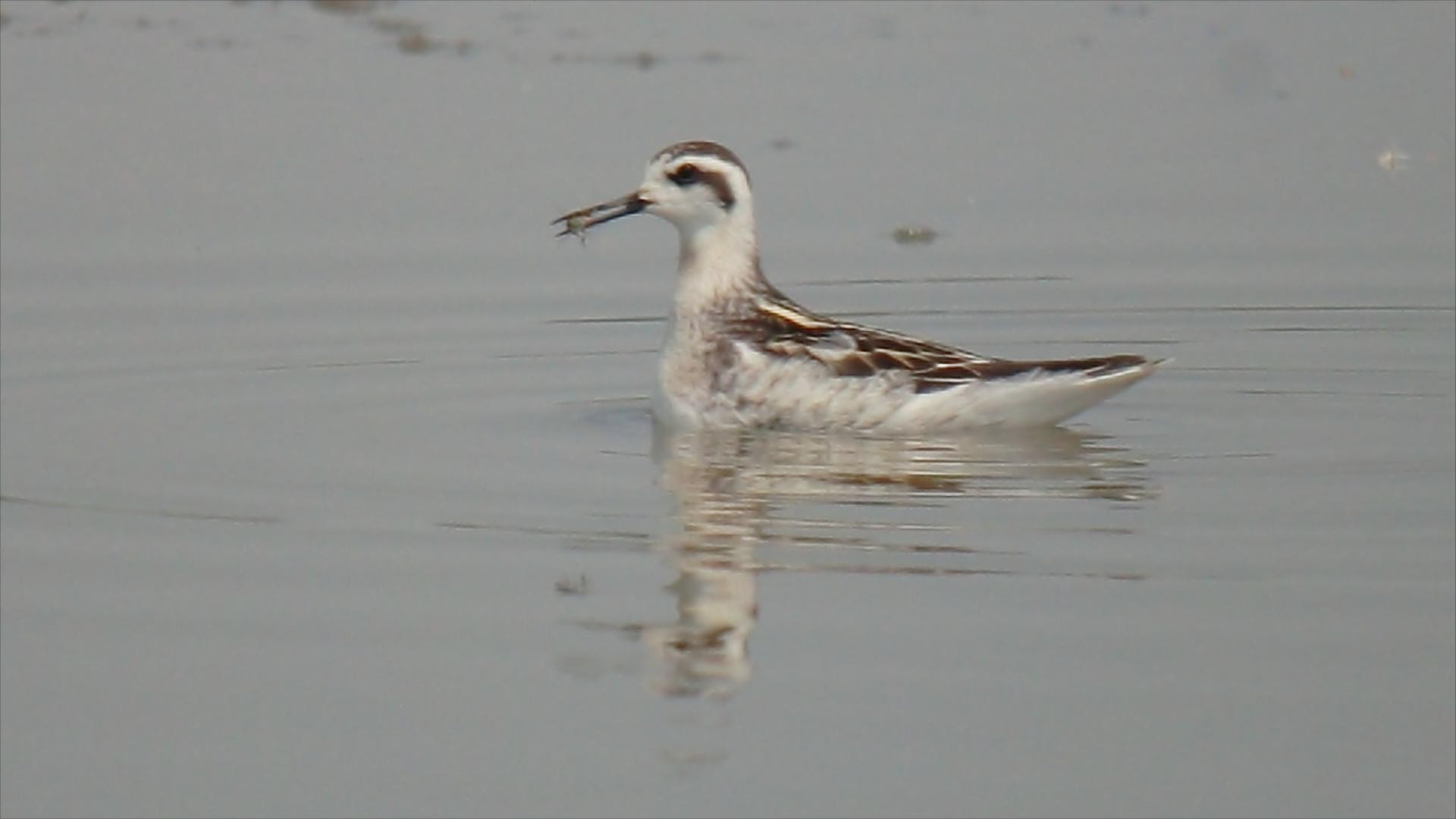Red-necked Phalarope
A species of Phalaropes, Also known as Northern Phalarope Scientific name : Phalaropus lobatus Genus : Phalaropes
Red-necked Phalarope, A species of Phalaropes
Also known as:
Northern Phalarope
Botanical name: Phalaropus lobatus
Genus: Phalaropes
 Photo By Andy Reago & Chrissy McClarren , used under CC-BY-2.0 /Cropped and compressed from original
Photo By Andy Reago & Chrissy McClarren , used under CC-BY-2.0 /Cropped and compressed from original Description
The red-necked phalarope is about 18 cm (7.1 in) in length, with lobed toes and a straight, fine bill. The breeding female is predominantly dark grey above, with a chestnut neck and upper breast, black face and white throat. They have a white wing stripe which helps distinguish this bird from the similar Wilson's phalarope. The breeding male is a duller version of the female. They have lobed toes to assist with their swimming. Young birds are grey and brown above, with buff underparts and a black patch through the eye. In winter, the plumage is essentially grey above and white below, but the black eyepatch is always present. They have a sharp call described as a whit or twit. 
Size
19 - 20 cm
Colors
Gray
White
Orange
Life Expectancy
10 years
Nest Placement
Ground
Clutch Size
2 - 6 eggs
Incubation Period
1 brood
Number of Broods
17 - 29 days
Feeding Habits
Red-necked Phalarope predominantly consume aquatic invertebrates and some flying insects. Notably, they spin on water surfaces to create upwellings, bringing prey like zooplankton and crustaceans to the surface for feeding. They exploit converging ocean currents and tidal actions, particularly during migration, to access abundant food sources.
Habitat
Red-necked Phalarope predominantly inhabits marine environments such as oceans, bays, and coastal waters during the nonbreeding season, typically where currents converge to enrich the surface with plankton. Breeding grounds are chiefly the Arctic tundra, beside lakes, bogs, and marshes, often near the tundra-forest ecotone. They are adapted to extreme latitudes, nesting at low altitude, and thrive in cold, open landscapes with minimal vegetation. During winter, some individuals may migrate to inland freshwater bodies like lakes and ponds.
Nest Behavior
When it comes to nesting, males add plant material during the period of egg-laying. Males are responsible for incubation and rearing of the chicks, with the females leaving shortly after laying the eggs.
Nest Characteristics
Red-necked Phalarope constructs nests on mossy hummocks near standing water, which they line with sedges and grasses. Males enhance the nest with extra vegetation.
Dite type
Aquatic invertebrate eater
People often ask
Migration Overview
Almost all of the nonbreeding season is spent in open water. As this species rarely comes into contact with humans, it can be unusually tame. 
General Info
Feeding Habits
Bird food type
Sounds
Call
Recording location: United States
Behavior
Red-necked Phalarope engage in an unusual gender role reversal where the more vibrant and larger females compete for mates, while the dutiful males incubate and care for the offspring. Typically forming one-on-one pairs, females may swiftly seek new partners after mating and egg-laying, showcasing a unique mating system among avians. Daily, red-necked Phalarope are busy foraging by swimming in tight circles to create whirlpools, drawing prey to the surface.
Species Status
Not globally threatened.

 Photo By Andy Reago & Chrissy McClarren , used under CC-BY-2.0 /Cropped and compressed from original
Photo By Andy Reago & Chrissy McClarren , used under CC-BY-2.0 /Cropped and compressed from original Scientific Classification
Phylum
Chordates Class
Birds Order
Shorebirds Family
Sandpipers Genus
Phalaropes Species
Red-necked Phalarope